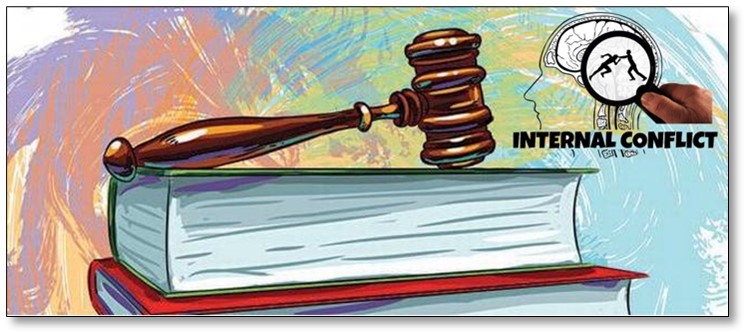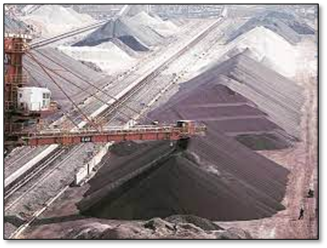Friday, 25th June 2021
Antarctic Treaty System
In News
The 1959 Antarctic Treaty celebrates its 60th anniversary of entering into force.
About the Antarctic Treaty
- The Antarctic Treaty was signed in Washington on 1 December 1959 by the twelve countries (including Argentina, Australia, Chile, France, New Zealand, Norway and the UK, US, and USSR etc.).
- It entered into force in 1961. The total number of Parties to the Treaty is now 54. India is also a member.
- Some important provisions of the Treaty:
- Antarctica shall be used for peaceful purposes only.
- Freedom of scientific investigation in Antarctica and cooperation toward that end shall continue.
- Prohibition of military activities, nuclear tests and the disposal of radioactive waste.
Significance of Antarctic Treaty
- It remains the only example of a single treaty that governs a whole continent.
- The most important provision of the treaty is Article IV, which effectively seeks to neutralise territorial sovereignty in Antarctica.
- The treaty also put a freeze on any disputes between claimants over their territories on the continent. Claimants agreed to abide by the rules and obligations of the treaty, which meant countries that don’t recognise claims (such as China and Russia) are free to go about scientific research and peaceful activities.
Relevance of Antarctica Treaty in Current Geopolitical Scenario
- While the Antarctic Treaty has been able to successfully respond to a range of challenges, circumstances are radically different in the 2020s compared to the 1950s.
- Antarctica is much more accessible, partly due to technology but also climate change.
- More countries now have substantive interests in the continent than the original 12 countries.
- Some global resources are becoming scarce, especially oil.
- This will inevitably result in increased attention being given to the potential for Antarctic mining to take place sometime in the future. Calls to revisit the prohibition on Antarctic mining would seem inevitable.
- There is also uncertainty as to China’s intentions in Antarctica. There is considerable speculation as to China’s interests in Antarctic resources, especially fisheries and minerals, and whether China may seek to exploit weaknesses in the treaty system to secure access to those resources.
- For instance, Tensions have arisen in recent years over the promotion of Southern Ocean marine reserves. Agreement was reached in 2016 on a Ross Sea Marine Protected Area, and momentum is building for a broader network of Southern Ocean marine protected areas. However, China and Russia have resisted these initiatives.
- Building, operating and conducting scientific research programs are key to the success not only of the treaty, but also to the claimants’ credibility in Antarctica. For instance, under the environmental protocol of the Antarctic Treaty (1959), India has set up three research stations- Dakshin Gangotri, Maitri and Bharati.
Conclusion
The treaty has been able to survive so long because of its ability to evolve through a number of additional conventions and other legal protocols. These have dealt with the conservation of marine living resources, prohibitions on mining, and the adoption of comprehensive environmental protection mechanisms. This framework is now referred to as the “Antarctic Treaty System”.
https://www.moes.gov.in/writereaddata/files/archive/ayr96-97/ar_coa82.htm
https://www.ats.aq/e/antarctictreaty.html
Green hydrogen purchase
In News
The government has notified that purchase of green hydrogen will be made mandatory for certain sectors on the pattern of renewable purchase obligation.
About the News
- At the 'India's role as a Global Champion for the Energy Transition theme at the UN High Level Dialogue on Energy 2021', the New & Renewable Energy Minister proposed that Hydrogen purchase obligations will be introduced for fertilizers/ refineries involving private sector. It would ensure the sale of the product and will be green on the lines of RPO.
- India has launched National Hydrogen Mission to introduce hydrogen purchase obligations for fertilizers/ refineries involving private sector in transparent & competitive manner to produce green hydrogen.
- Green hydrogen is produced using RE and electrolysis to split water and is distinct from grey hydrogen, which is produced from methane and releases greenhouse gases into the atmosphere, and blue hydrogen, which captures those emissions and stores them underground to prevent them causing climate change.
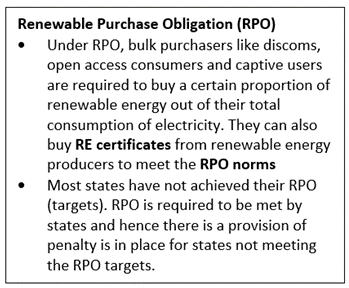
India and Green Hydrogen
- Reduce Imports: Over time, green hydrogen, as an energy carrier, can replace some of our energy imports. This is feasible, given India’s record-low renewable power prices ( ₹99/$2.7 cents per kWh).
- Net Exporter: The Global Hydrogen Council has in a recent study classified India as a net exporter of green hydrogen from 2030, thanks to cheap renewable tariffs. Increasing the share of hydrogen in the country’s energy mix would take it towards greater self-reliance in its energy needs.
- The RE targets: Green hydrogen is critical to meet India’s target of 450 gigawatt of renewable energy by 2030. India today is the world’s third largest greenhouse gas emitter and one of the largest consumers of CO2 intensive “grey hydrogen”. Green hydrogen help in decarbonising and also enhance India’s energy security.
- New Avenue for Growth: Green hydrogen is a sunrise industry and will enable Indian entrepreneurs to capture new avenues of growth. Locally-available green hydrogen can attract high-value green industries to shift production to India. Localization of electrolyzer production and development of Green-H2 projects could create a new green technology market worth about $18-20 billion in India and generate domestic jobs.
- R &D: Ministry of New and Renewable Energy has been supporting a broad based Research Development and Demonstration (R&D) programme on Hydrogen Energy and Fuel.
Great Barrier Reef
In News: UNESCO World Heritage committee has recommended Australia’s Great Barrier Reef to be added to the list of “in danger” World Heritage Sites.
About the Great Barrier Reef:
- The Great Barrier Reef is a world heritage site of remarkable biodiversity and beauty located in the Coral Sea, off the coast of Queensland, Australia.
- It is the world’s most extensive coral reef ecosystem with 400 types of coral in 2,500 individual reefs and over 900 islands.
- It is home to species like dugong and large green turtle, which are threatened with extinction.
Reasons behind the current move:
- The world’s largest living ecosystem has suffered three major coral bleaching events due to severemarine heatwaves (phenomenon of anomalous warm sea surface temperatures).
The Reef 2050 Plan of Australia and Reality Check:
- The Reef 2050 Long-Term Sustainability Planis the Australian and Queensland Government’s overarching framework for protecting and managing the Great Barrier Reef by 2050.
- Despite this, the coral reef ecosystemhas suffered bleaching events prompted environmental groups to call for Australian government's stringent climate action.
- Australia, one of the world's largest carbon emitters per capita, has remained reluctant to commit to stronger climate action, citing jobs loss as the major reason during the transition.
- Australia has been battling to keep the Great Barrier Reef off the “in danger” list, as it is a major tourist attraction that supports thousands of jobs.
Primary source: https://whc.unesco.org/en/list/154/
http://www.environment.gov.au/marine/gbr/long-term-sustainability-plan
https://www.britannica.com/place/Great-Barrier-Reef
Response of the Reserve Bank of India to Covid-19
In News
In response to Covid-19, RBI undertook various measures in multiple capacities to provide relief to the economy.
Impact of Covid-19 on Indian Economy
- India suffered a severe economic contraction with GDP estimated to have fallen by 24% in Q1 FY 2021 and by 7.3% in FY 2020-21 as a whole. The full FY 2020–21 GDP is estimated to have contracted by 8.0%, which has come on top of an ongoing economic slowdown.
- The current expectation of most forecasters is that the Indian economy will stage a robust recovery and grow by 10–12.5% in FY 22. Thus, overall, the economic cost of Covid-19 will be around two years of GDP growth and as yet indeterminate losses in employment and livelihoods.


Why did the RBI undertake Proactive and Bold Measures?
- Low Fiscal Stimulus: At 2-2.5% of GDP, India’s fiscal stimulus has been at the lower end amongst emerging markets. With the possibility of a relatively constrained fiscal response, the RBI had to do much of the heavy lifting.
- Work in various capacities: The RBI is a full-service central bank as the monetary authority, lead financial system regulator and supervisor of financial intermediaries, banker to and debt manager of the central and state governments, currency issuer and manager, and regulator and operator of the payment and settlement system. Its policy actions since February 2020 have therefore encompassed all these areas and have had the benefit of being coordinated. It has carried out more policy actions than any other EME central banks.
Impact of the Steps taken by the RBI
- Overall Impact: Overall, the RBI, in cooperation with the Government of India, has succeeded in achieving its broad objective of keeping financial intermediaries, financial markets and the financial system as a whole sound, liquid, and functioning smoothly.
- Financial Stability: The RBI maintained financial stability despite initial conditions of the Indian financial intermediaries being stressed as a consequence of legacy problems. It has also protected households as well as small and large businesses from experiencing acute financial issues.
- Monetary Policy Transmission: Transmission of the highly accommodative monetary policy has led to lowering of Interest rates across the board and g-sec yields are at almost record lows, with most real interest rates now being in negative territory.
- Government borrowing: The RBI succeeded in managing the highest ever level of the government’s market borrowing The weighted average borrowing cost for the central government, at 5.79% during 2020-21, was at a 16-year low. Overall, although the RBI avoided direct funding of the substantially enhanced fiscal deficits of both the central and state governments.
- Performance mismatch: However, despite all the measures implemented to promote the flow of credit to all segments of the market, credit growth has continued to be sluggish except for a significant increase to the SMSE sector. Hence there is a mismatch between the performance of the real sector and financial markets. This could potentially lead to enhanced stresses experienced by both lenders and borrowers, leading to potential financial instability. Thus, financial stability challenges remain for the Indian financial system and its regulator in the months to come.
Conclusion
Policy intervention by the RBI can be evaluated as relatively comprehensive and broad-based. Just like other central banks, its skills in managing such a crisis had been honed during the NAFC in 2008-09. While, unlike advanced economy central banks, it did not have to practice unconventional monetary policy at that time, it was able to learn from their practices in designing its policy response this time.
This Day in History -National Emergency
On June 25, 1975, National emergency was declared in India, for a 21-month period by the then Prime Minister Indira Gandhi. Officially issued by President Fakhruddin Ali Ahmed under Article 352 of the Constitution due to the prevailing internal disturbance, the Emergency was in effect from June 25, 1975, until its withdrawal on March 21, 1977. The Emergency is often regarded as a dark phase in independent India's history because this period was marked by unbridled state incarceration, stifling of dissent, and government crackdown on civil liberties. The verdict of the Allahabad High Court convicting then Prime Minister Indira Gandhi of electoral malpractices and debarring her from holding any elected post was one of the factors that led to the imposition of the Emergency.
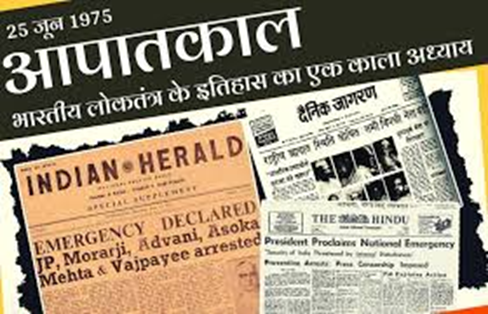
https://newslivetv.com/june-25-on-this-day-in-1975-indira-gandhi-imposed-emergency/
Image of the Day -Ancient Skeletal Remains, Israel
Skeletal remains of ancient unknown human species have been discovered at Nesher Ramla site, Israel. The finds consist of a partial skull and jaw from an individual who lived between 140,000 and 120,000 years ago of the middle Pleistocene epoch. Israel formed a bridge for various species to move between Africa, Europe, and Asia in the ancient times. The team members think the individual descended from an earlier species that may have spread out of the region hundreds of thousands of years ago and given rise to Neanderthals in Europe and their equivalents in Asia. The scientists have named the newly discovered lineage the "Nesher Ramla Homo type". An interesting find is the stone tools used by the Nesher Ramla humans. It was produced with the same techniques used by modern humans at the time. It points towards a possible link between Nesher Ramla Homo and modern humans.

https://www.bbc.com/news/science-environment-57586315
Build Back a Better World (B3W) Initiative
- Context: Sharing its view on B3W, India has stated that development projects should be transparent, environment friendly and should not burden recipient countries with debt.
- B3W is a values-driven, high-standard, and transparent infrastructure partnership led by major democracies to help narrow the $40+ trillion infrastructure need in the developing world, which has been exacerbated by the COVID-19 pandemic.
- Launched at this year’s G-7, the B3W aims to present an alternative to China’s Belt and Road Initiative (BRI) as BRI has been slammed for increasing debt of countries and being insensitive towards their environmental needs.
- Through B3W, the G7 and like-minded partners will mobilize capital investment in
- Handling climate change, health security, augmenting digital technology and gender equity.
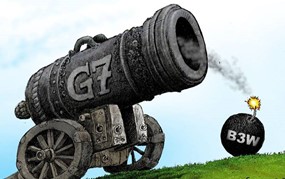
Primary source: https://thediplomat.com/2021/06/b3w-building-an-alternative-to-the-bri-or-falling-into-the-same-trap/
Picture Source: https://www.gisreportsonline.com/bidens-build-back-better-world-opportunities-pitfalls-and-hot-air,economy,3540.html
AgriStack
- Context: The Department of Agriculture, Cooperation and Farmers Welfare has signed an MoU with Microsoft to start a pilot project in 100 villages to create a ‘Unified Farmer Service Interface’ through its cloud computing services which sets in motion the ministry’s plan of creating ‘AgriStack’.
- AgriStack is a collection of technologies and digital databases that focuses on India’s farmers and the agricultural sector.
- These new databases are being built to primarily tackle issues such as poor access to credit and wastage in the agricultural supply chain.
- Under AgriStack’, the government aims to provide ‘required data sets’ of farmers’ personal information to Microsoft to develop a farmer interface for ‘smart and well-organized agriculture’.
- The digital repository will aid precise targeting of subsidies, services, and policies.
- Under the program, each farmer of the country will get an FID, or a farmers’ ID, linked to land records to uniquely identify them.

Primary source: https://www.downtoearth.org.in/news/agriculture/agristack-the-new-digital-push-in-agriculture-raises-serious-concerns-77613
Picture Source: https://inc42.com/buzz/govts-planned-agristack-to-provide-gateway-for-farmers-startups/
Tax Inspectors Without Borders (TIWB) Program
- Context: Bhutan’s TIWB program has been launched in partnership with India.
- TIWB is a joint initiative of the United Nations Development Program (UNDP) and the Organization for Economic Cooperation and Development (OECD).
- India has been chosen as the Partner Jurisdiction and has provided the tax expert for this program.
- TIWB aims to aid Bhutan in strengthening its tax administration by transferring technical know-how and skills to its tax auditors, and through sharing of best audit practices.
- The focus of the program will be in International Taxation and Transfer Pricing.
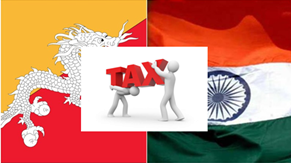
Primary source: https://www.pib.gov.in/PressReleseDetailm.aspx?PRID=1729822
Picture source: https://www.modernghana.com/news/631118/tax-inspectors-without-borders-to-bolster-domesti.html
National Maritime Heritage Complex (NMHC)
- Context: The Ministry of Culture (MoC) and Ministry of Ports, Shipping and Waterways (MoPSW) have signed an MoU for ‘Cooperation in Development of National Maritime Heritage Complex (NMHC) at Lothal, Gujarat.
- NMHC will be developed in Lothal and will offer a window to India’s rich maritime heritage to the world.
- It will be developed as a world class historical site and an international tourist destination, attracting visitors and history enthusiasts from all over the world.
- One of the most unique feature of NMHC is the recreation of ancient Lothal city- one of the prominent cities of the ancient Indus valley civilization.
Primary source: http://newsonair.com/2021/06/19/new-dawn-of-indias-glorious-past-development-of-national-maritime-heritage-complex-nmhc-at-lothal/
Picture source: https://pib.gov.in/PressReleaseIframePage.aspx?PRID=1727640
How Modi government’s flagship missions have put people at the centre of urban governance
Essence: This article is written in backdrop of three major flagship missions, the Pradhan Mantri Awas Yojana (Urban), Atal Mission for Rejuvenation and Urban Transformation (AMRUT) and Smart Cities Mission. Each of the missions delegated the powers to appraise and approve projects to the states invocating the spirit of cooperative federalism. One of the banes of government programmes is the tardy implementation. The urban space is being transformed at a rapid pace with the increasing use of technology. There is relentless monitoring of the missions at the highest levels. With the poor at the focus of all programmes, the past seven years have shown one thing: The government is and will be unwavering in its commitment to the poor and will not be distracted.
Why you should read this article?
- To get an overview of the performance of Pradhan Mantri Awas Yojana (Urban), Atal Mission for Rejuvenation and Urban Transformation (AMRUT) and Smart Cities Mission after seven years.
- To understand how space technology helped in plugging the loopholes in these programs.
Article Link: https://indianexpress.com/article/opinion/columns/modi-govt-urban-development-pmay-amrut-smart-cities-mission-7374614/
Design a climate-ready governance system
Essence: Countries around the world, including India, face the challenge of building a climate-ready state. Because almost all sectors and many parts of society contribute to greenhouse gases and are vulnerable to its impact, the climate crisis requires an all-of-government and all-of-society response. This article emphasises on deepening and enhancing systems of governance for the climate crisis, which include dedicated organisations, policy frameworks, capacities, and financing mechanisms besides enhanced policy and targets for a future climate ready state.
Why you should read this article?
- Have a brief critique of present climate governance in India.
- Briefly have an overview of climate governance systems in UK, USA and China.
- Learn about the proposed institutional architecture capable of crafting a low-carbon development pathways as a new approach to climate governance in India.
Article Link: https://www.hindustantimes.com/opinion/design-a-climate-ready-governance-system-101624539589491.html
Sahara Sahel Foods: Using forgotten native dryland trees as food sources
Background:
- The Sahara and Sahel region contain dozens of native, little-known food trees like nutritious fruits, seeds, leaves and gums.
- Due to Arabisation and colonisation, these have been forgotten or stigmatised. Coloniser changed the food habits and introduced the food which were not nutritious and not ideally adapted to the harsh climatic conditions.
- To revive the native variety back, Josef Garvi founded Sahara Sahel Foods in 2014.
Sahara Sahel Food can be a game changer:
- Nutritional Security: It utilises nutritional profiles that are far superior to those of the cereals used in local diet.
- Indigenous Knowledge: It promotes indigenous shrubs and trees leading to regenerate, nurture and protect local variety.
- Resilience: It promotes resilience variety and wild vegetation which is the need of the hour in the wake of climate change
- Employment: It procures raw material from the local population and financially empower them
- Food processing: It is involved in food processing activities like milling, oil processing etc
Outcome:
- Innovative practices have can lead to growth in the rural areas by providing employment
- Empowerment: Self-help Groups leading to vulnerable section like women empowerment, farmers, pastoralist and refugees from Boko haram
Things to Ponder:
- Importance of Self-Help Group, Importance of Wild variety of plants
Question asked on similar topic:
- Which factors influence the growth of wild plants? Discuss their economic significance. UPSC 2020: Geography Optional.
http://www.fao.org/3/a-bq708e.pdf
Share the article
Get Latest Updates on Offers, Event dates, and free Mentorship sessions.

Get in touch with our Expert Academic Counsellors 👋
FAQs
UPSC Daily Current Affairs focuses on learning current events on a daily basis. An aspirant needs to study regular and updated information about current events, news, and relevant topics that are important for UPSC aspirants. It covers national and international affairs, government policies, socio-economic issues, science and technology advancements, and more.
UPSC Daily Current Affairs provides aspirants with a concise and comprehensive overview of the latest happenings and developments across various fields. It helps aspirants stay updated with current affairs and provides them with valuable insights and analysis, which are essential for answering questions in the UPSC examinations. It enhances their knowledge, analytical skills, and ability to connect current affairs with the UPSC syllabus.
UPSC Daily Current Affairs covers a wide range of topics, including politics, economics, science and technology, environment, social issues, governance, international relations, and more. It offers news summaries, in-depth analyses, editorials, opinion pieces, and relevant study materials. It also provides practice questions and quizzes to help aspirants test their understanding of current affairs.
Edukemy's UPSC Daily Current Affairs can be accessed through:
- UPSC Daily Current Affairs can be accessed through Current Affairs tab at the top of the Main Page of Edukemy.
- Edukemy Mobile app: The Daily Current Affairs can also be access through Edukemy Mobile App.
- Social media: Follow Edukemy’s official social media accounts or pages that provide UPSC Daily Current Affairs updates, including Facebook, Twitter, or Telegram channels.

